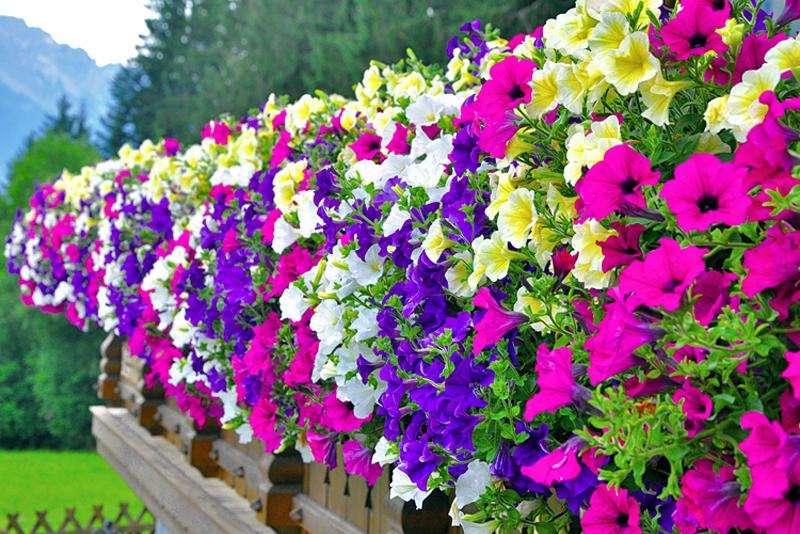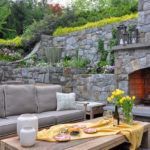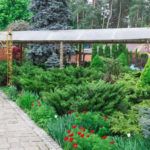Contents
A beautiful garden is the result of careful planning and the use of appropriate landscaping plants. They can transform your outdoor space into a vibrant, dynamic haven. By selecting plants with varying heights and blooming periods, you can ensure your garden looks fantastic throughout the year.

Herbaceous Landscaping Plants
Herbaceous plants are a versatile group that can bring life to any garden. They are perfect for planting near ponds or along the edges of flower beds. Tall landscape flowers serve as striking focal points, while low-growing flowers add texture and depth to the second tier. Ornamental grasses tie everything together with their graceful presence.
The Annual Flora — Color and Variety
Annual plants add a burst of color and variety to your garden. They bloom beautifully for a single season, making them perfect for experimenting with different designs each year.
Garden Cosmos
Blooming profusely in the second half of summer, cosmos is perfect for brightening up less attractive spots in your yard. Its double-pinnate leaves and tall stems, reaching up to 120 cm, create an airy, whimsical look.
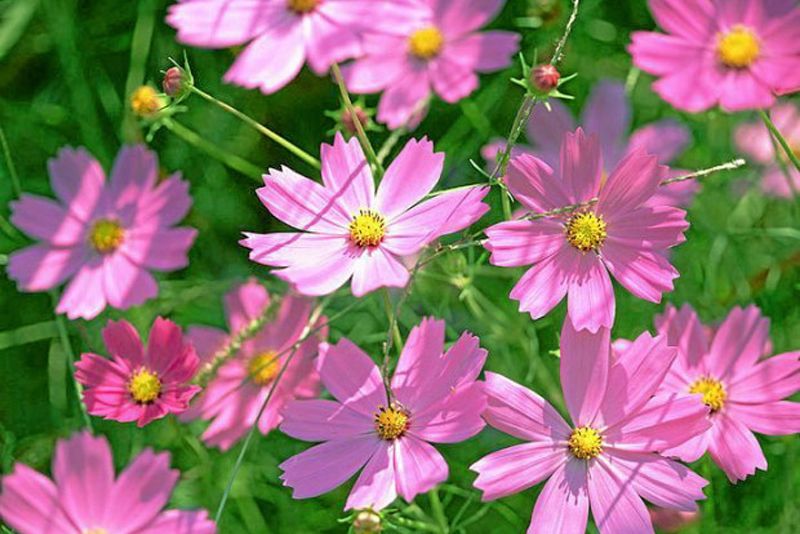
Zinnia
Known for their heat resistance and vibrant hues, zinnias come in almost every color of the rainbow, except blue. They range from tall, dahlia-like blooms up to 90 cm to compact, 20 cm plants ideal for the foreground.
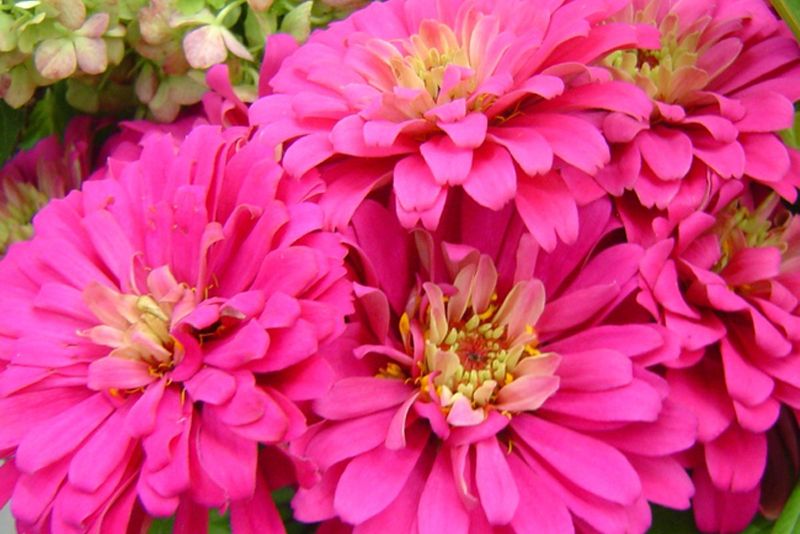
Balsam Flower (Touch-Me-Not)
This plant thrives in shady spots, making it perfect for north-facing gardens. Its long flowering period ensures your garden remains colorful even in lower light conditions.
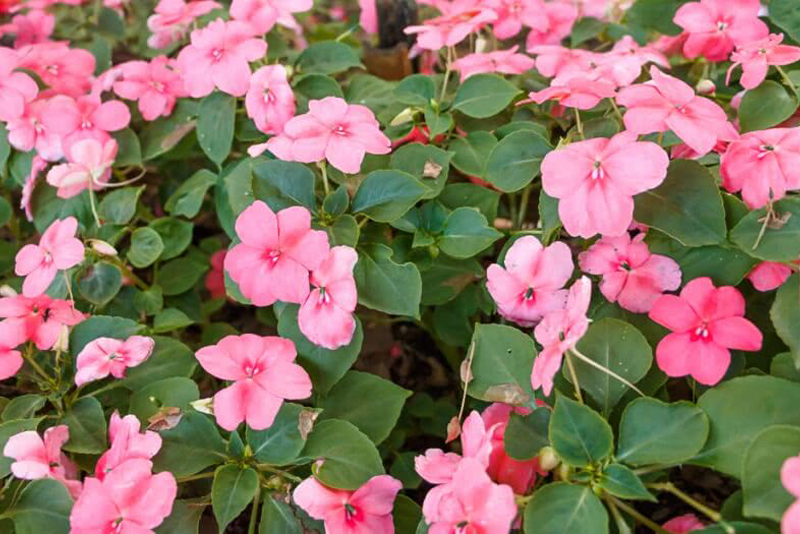
Petunia
An incredibly versatile and unpretentious plant, petunias are ideal for pots, hanging baskets, and flower beds. Their multi-colored blooms create stunning patterns, making them a favorite for front yard landscaping.
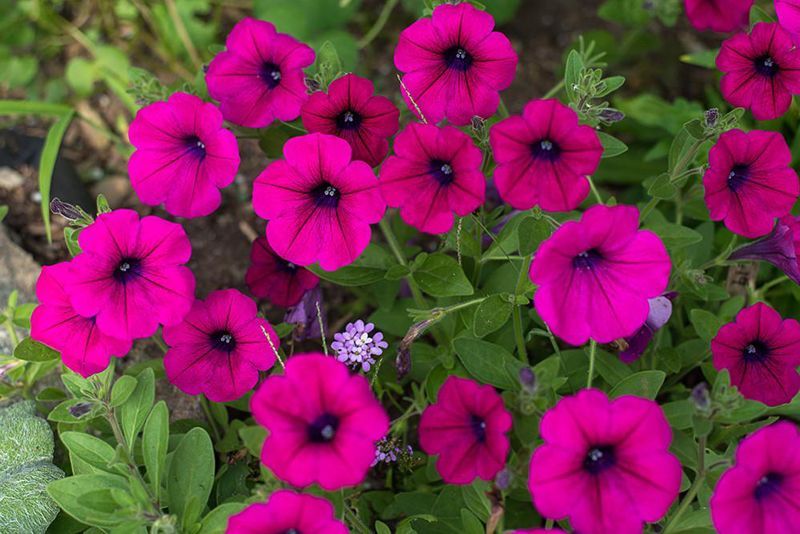
Bidens (Spanish needles)
This sun-loving, drought-tolerant plant blooms bright yellow flowers from summer to late autumn. It’s a hardy choice for sunny spots in your garden.

Perennial Landscaping Plants — Lasting Beauty
Perennials are the backbone of any garden, returning year after year to provide lasting beauty. They offer structure and stability, ensuring your garden remains vibrant throughout the seasons.
Geranium (Crane’s-bill)
These compact, dense bushes bloom abundantly and have delicate leaves. Their varied sizes and colors make them a versatile choice for any garden.
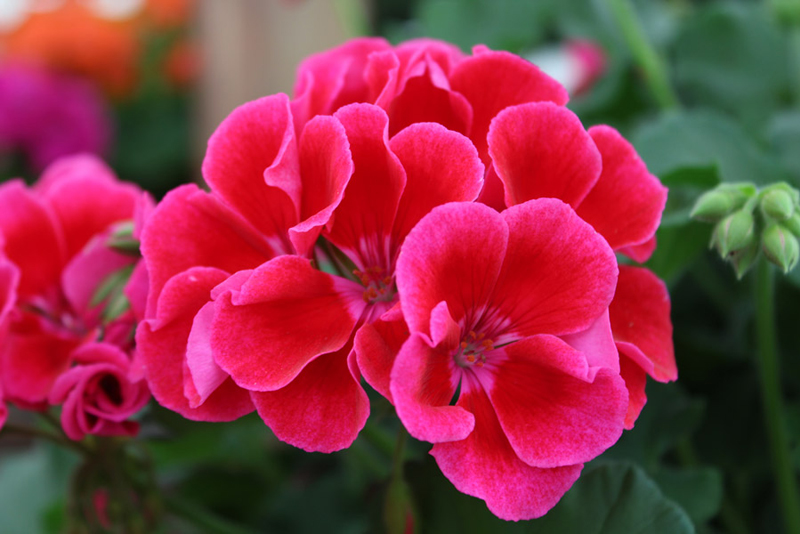
Coleus
Grown primarily for its brightly colored, velvety leaves, Coleus adds a splash of color to shady spots. While its flowers are inconspicuous, the foliage is anything but.

Sedge plants
Popular in modern garden designs, sedges are valued for their graceful leaves and unique inflorescences. They can highlight other plants’ beauty or hide imperfections in your garden layout.
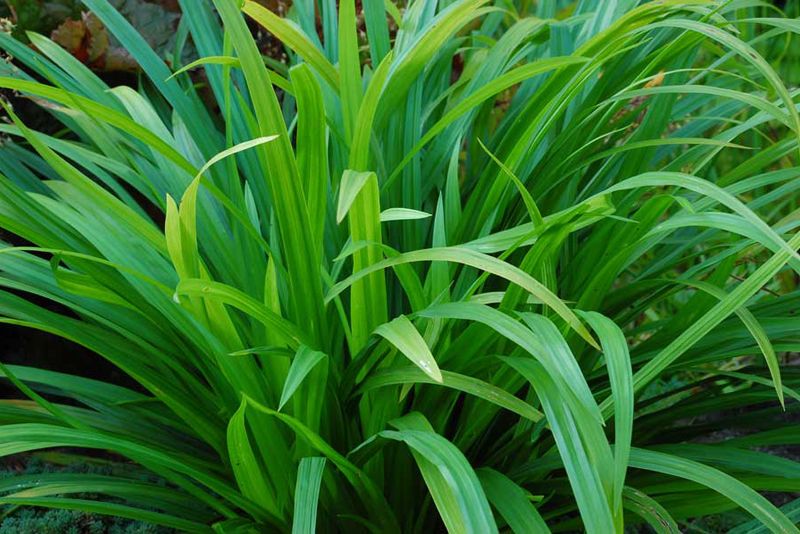
Angelonia
Known as the plant with an “angelic face,” Angelonia thrives in sunny, dry areas. Its vibrant, floral balls of color attract attention and add a touch of the originality to your garden.

Creating a Balanced Garden with Landscaping Plants
Balancing different types of plants is essential for a cohesive garden design. Here are some tips to help you create a harmonious outdoor space:
- Mix Heights and Textures. Combine tall, medium, and low-growing plants to add depth and interest to your garden. Ornamental grasses, like switchgrass or fountain grass, can provide a soft, flowing backdrop to more structured plants.
- Consider Bloom Times. Plant a variety of species that bloom at different times to ensure continuous color throughout the year. Early bloomers like tulips and daffodils can be followed by summer stalwarts such as coneflowers and black-eyed Susans, with late bloomers like asters and chrysanthemums providing autumn interest.
- Use Focal Points. Tall plants or unique specimens can serve as focal points, drawing the eye and adding drama to your garden. Consider using plants like hydrangeas or lilac bushes for this purpose.
- Incorporate Ground Covers. Low-growing plants like creeping thyme or sedum can fill in gaps, suppress weeds, and provide a lush, green carpet that ties everything together.
Maintaining Your Landscaping Plants
Proper maintenance is crucial for keeping your garden looking its best. Here are some tips to help you care for your landscaping plants:
- Watering. Most plants need regular watering, especially during dry spells. However, be mindful not to overwater, as this can lead to root rot.
- Mulching. Applying mulch around your plants helps retain moisture, suppress weeds, and regulate soil temperature. Organic mulches, like wood chips or straw, also improve soil fertility as they decompose.
- Pruning. Regular pruning encourages healthy growth and helps maintain your plants’ shape. Remove dead or diseased branches promptly to prevent the spread of pests and diseases.
- Fertilizing. Use a balanced fertilizer to provide your plants with essential nutrients. Slow-release fertilizers are a great option, as they provide a steady supply of nutrients over time.
New Additions to Consider
Adding new landscaping plants to your garden can refresh its look and feel. Here are some unique options to consider:
- Lavender. This aromatic plant adds both beauty and fragrance to your garden. Its purple blooms attract pollinators and can be used in various garden designs.
- Hosta. Known for their lush foliage, hostas thrive in shady areas and come in various sizes and colors, from deep blue-green to bright yellow.
- Daylilies. These hardy perennials bloom profusely in summer, with flowers that last just one day each. Their wide range of colors makes them a versatile addition to any garden.
- Echinacea. Also known as coneflowers, echinacea are drought-tolerant and attract butterflies and bees. Their large, daisy-like flowers add a splash of color to sunny spots.
Landscaping plants are the cornerstone of any beautiful garden. By carefully selecting a mix of annuals, perennials, and ornamental grasses, you can create a dynamic, ever-changing landscape that brings joy and satisfaction throughout the year. Remember, the key to a stunning garden is diversity and balance. So don’t be afraid to mix things up, experiment with new plants, and most importantly, have fun with your gardening adventures.

